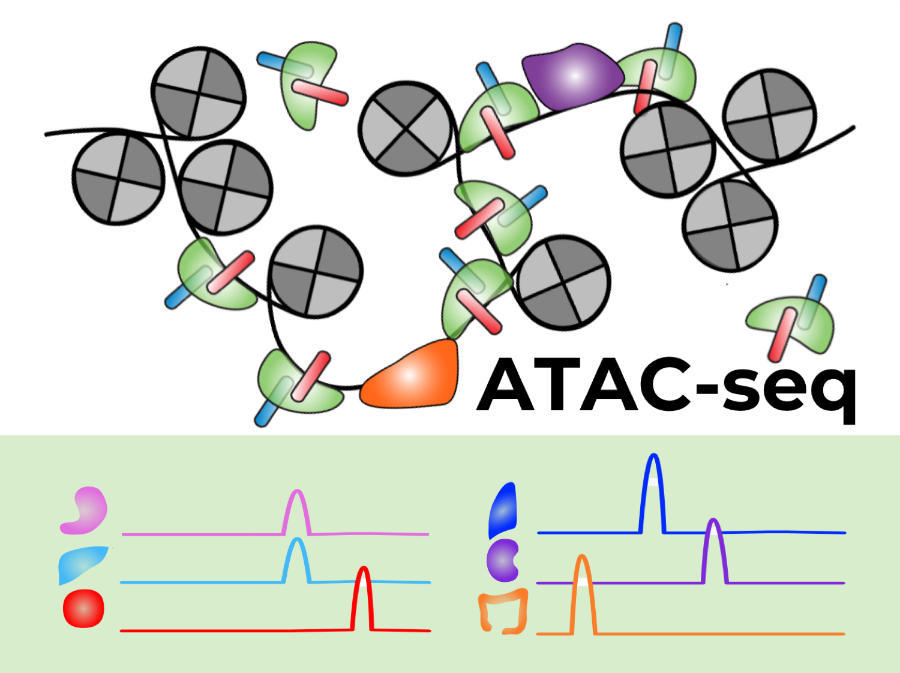ATAC-seq on TCGA: Insights Into the Noncoding Region in Primary Cancers
, by Peggy I. Wang
Researchers have charted the noncoding genome in 23 primary cancers, identifying new DNA regulatory elements and gaining insight into the vital roles they may play in the disease. In a study to be published in Science on October 26, 2018, researchers applied the assay for transposase-accessible chromatin using sequencing (ATAC-seq) to 410 TCGA tumor samples, getting an unprecedented systematic look at gene dysregulation in cancer.
The noncoding genome secludes a wealth of information on how cancers arise and behave, including how a particular cancer might respond to therapy.
“As a field, we know a lot about mutations that change the genes themselves, but less about why the wrong genes are turned on and off in cancer,” says Howard Y. Chang, MD, PhD, professor of Cancer Genomics and Genetics at Stanford University and a corresponding author for the study. “This new work fills in the missing piece in the puzzle.”
The ATAC-seq method identifies regions of open or active chromatin and positions of DNA-binding proteins with little starting material from frozen samples. The study, funded and led by CCG, illustrates how this relatively low-cost method—both in terms of money and required tissue sample—can greatly enhance what we learn from the more canonical sequencing methods.
Many New DNA Regulatory Elements, Many Specific to Cancer
The landscape of known DNA regulatory elements was greatly expanded in this study. Over 560,000 “peaks”, or regions of chromatin accessibility indicative of active DNA regulatory elements were identified, of which about 65% recapitulate features found in previous studies of healthy tissues. The remaining peaks represent potentially cancer-specific regulatory elements, with specific cancers having from 56,000 to 215,000 unique elements.
The large number of novel elements identified in this study hints at the level of gene regulation and corresponding control mechanisms at play in cancer that remain largely unstudied.
The peaks were largely cell-type specific and correlated well with gene expression. By clustering the regulatory elements, researchers observed that some cancers grouped into distinct subtypes, such as basal and non-basal breast cancer. Others, such as the various kidney cancers and some squamous cancers, grouped by tissue type.
Exploring a New Class of Cancer Mutations
The study provides insights into how gene regulation—or dysregulation—could help drive cancer initiation and progression. Mutations in regulatory elements could increase or decrease chromatin accessibility, for example, by generating or disrupting a transcription factor binding site.
By combining ATAC-seq and whole-genome sequencing information, the researchers identified thousands of somatic mutations falling within promoters and regulatory elements. This includes mutations in the TERT promoter region and motifs for known transcription factors. Importantly, ATAC-seq is well-suited not just for classifying mutations in regulatory elements, but also for identifying mutations, especially when compared with exome sequencing data which tends to not cover promoter regions.
Insights Into Why Immunotherapy Works Only for Some
The novel molecular details uncovered in this study may inform our ability to treat cancer, such as why immunotherapy only works in select patients. The researchers were able to estimate the level of immune infiltration based on the accessibility of known immune cell-specific regulatory elements. The accessibility of these regions was also inversely correlated with tumor purity, providing additional information for deconvoluting bulk tumor data.
The researchers also examined peaks associated with PDL1, a key target for immunotherapy. Expression of PDL1 was affected by four regulatory elements as far as 50 kb away and that varied in accessibility across cancer type. Understanding the state of the regulatory elements for PDL1 and other drug targets could inform personalized treatment paths for patients.
This work represents just an initial look at the noncoding genome: applying ATAC-seq in future large-scale cancer studies could tell us a lot more about regulatory elements and their relevance in the disease. “We can now find how the DNA elements that switch genes on and off in cancer, especially mutations that make the switch get stuck in the on position,” says Chang.
More information
The chromatin accessibility landscape of primary human cancers
doi:10.1126/science.aav1898
